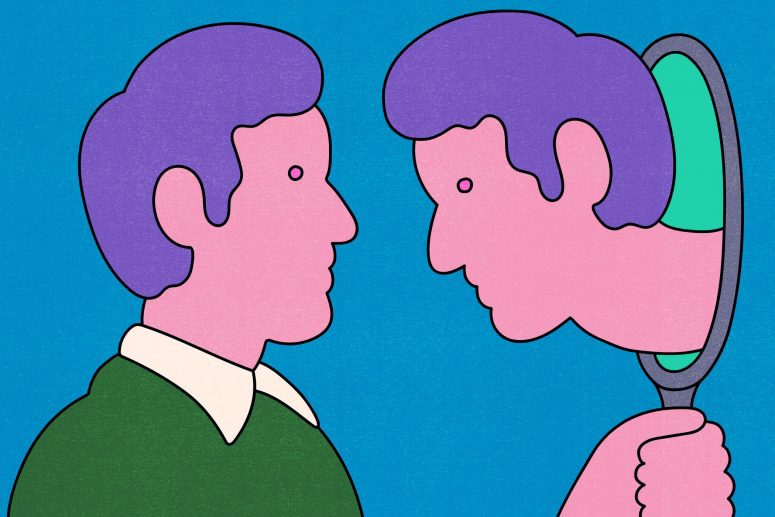History
Gestalt psychology is a theory of perception according to which people tend to find meaning and wholeness in everything they perceive. The word gestalt itself comes from the German language and signifies a whole that represents more than a simple sum of its parts. The originator of Gestalt psychotherapy is an American psychiatrist of German origin, Fritz Perls. He applied the basic postulates of gestalt psychology to the entire functioning of man.
According to the theory of gestalt psychotherapy, each individual is a whole that includes thoughts, feelings, body, perception, etc. At the same time, each individual is a part of his environment and of his present moment, and cannot be fully understood if viewed separately from them.
Theory
In the theory of gestalt psychotherapy, there’s a very noticeable influence of Western philosophers and psychoanalysis, as well as the influence of Eastern religious thought.
The Here and Now
The notion at the heart of Gestalt therapy theory is awareness. Gestalt psychotherapy is focused on awareness of everything that is happening now and here. Awareness is a form of experience in which a person is in contact with their existence. Contact here implies the relationship between the individual and the Other, as well as the individual and the aspects of their own personality (those they accept, as well as those they do not accept). The place where we meet everything we interact with is called the contact boundary. The self of each of us, that is, what we are at a given moment, is a co-creation that appears at this very contact boundary. We only exist in relation to others, and in relation to things around us, and we cannot be viewed separately. Pearls believed that neurotic symptoms occur due to a lack of awareness about oneself, one’s body or the environment. The problem occurs at the contact boundary and we should look at the way someone contacts their surroundings, if we are to find the answers.
The Contact Cycle
Yet another important concept is the contact cycle. Namely, ideally, each of us would follow the organic flow of consciousness in which, from the multitude of things we come in contact with every day (our ground), we manage to single out one thing that becomes the main “figure” in our consciousness. It becomes the center of attention and eventually, after we spend some time in full contact and after we get what we wanted from it, it retreats back into the background. Then, it merges with our experiences and identity, and makes room for a new figure to appear. However, this ideal scenario is not so common. More often than not, this spontaneous figure-ground dance is missing and, instead, we have various contact interruptions or blockages.
These blockages are sometimes holding us back in some way, but we look at them as part of “what we are” and we say: “I am such and such …” (I am just shy, I am clumsy, I have always been alone, etc.). Most often, it turns out that these interruptions are actually something that was useful to us before – a kind of creative adaptation to the situation we had in the past (for example, a child of sub depressed parents adapts to its situation by becoming a “sad clown” who tries to cheer them up, while neglecting its needs) or currently serving some purpose, ie we derive some “benefit” from them (eg. a student that just can’t seem to graduate simply because he does not want to leave his single father – from the outside, it bothers him, but when we look more closely, we see that the benefit he derives is that he remains loyal to his father by staying with him).
How therapy works
Most clients come to therapy with the idea of changing themselves. However, when I ask the question: “How will you know that psychotherapy is working or that it makes sense for you?”, I often get the answer: “By feeling better.” That is, the focus of the desired outcome is the elimination of problems. Unfinished businesses and not taking responsibility for what is happening at the moment are usually the main causes of the problems that clients bring.
Basically, we want to remove the afore-mentioned something that we consider to be our “second nature”, but change seems impossible because we simply “are the way we are”. In the therapeutic setting, we re-examine each of these “parts of ourselves” that torment us. We look at them and decompose them, contact them and wonder where we learned to be like that, as well as when and how it was potentially useful to survive, figuratively speaking (and sometimes literally). After that, and with the awareness that we are no longer in the situation that happened then and there, we begin to, in a safe place and in a safe relationship with a supportive therapist, practice other ways of behaving and contacting.
If you think that you can benefit from professional support on this issue you can reach out here.
Branka Mlinar is a psychologist and Gestalt therapist offering psychotherapy and counselling to adolescent and adult individuals. She’s mostly worked with problems of anxiety, interpersonal and relationship issues, procrastination, work-related stress, trauma, and grief.
References:
Kostić, M. (1983). Odnos terapeuta i klijenta u geštalt terapiji. Psihijatrija Danas.
Perls, F., Hefferline, R.F., & Goodman, P. (1951). Gestalt therapy: Excitement and growth in the human personality, New York: Julian
Yontef, G. M. (1993). Awareness, dialogue and process: Essays on Gestalt therapy. Gouldsboro, ME: Gestalt Journal Press.
Zinker, J. (1977). Creative process in Gestalt therapy. New York: Random House.

